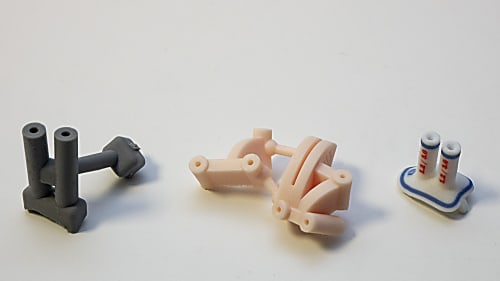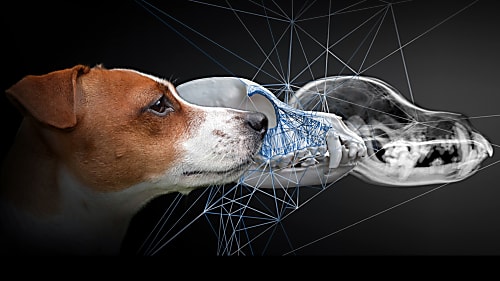The Revolution of Surgical Guides: 3 Case Studies Worth Reading
The application of 3D-printed surgical guides in veterinary medicine has brought about a pioneering change: here we present 3 very illustrative examples.
When someone receives one of the LimesVet products, they will find a brief description in the box that includes:
The latter is particularly important because, in the case of a surgical guide, the material properties and the production and printing methods can influence the sterilization process.
Therefore, we would like to show you the three main sterilization methods that can ensure the sterility of LimesVet's surgical guides.
CIDEX® Solution Sterilization
In this case, the surgical guide should be soaked in a high-level, broad-spectrum antimicrobial solution.
The major advantage of this method is that it can be safely used to sterilize instruments where heat treatment is not an option due to material properties.
It is crucial to ensure that the mixing ratio, solution freshness, and disinfection time are all in accordance with the prescribed guidelines (with the manufacturer's recommendation being followed, but we suggest at least 30 minutes) to guarantee complete sterility.
For specialized guides and drill templates, special attention must be given to ensure that the solution can effectively disinfect the narrow channels that will guide the drill bit during surgery.
These channels should be flushed multiple times with CIDEX solution.
Before surgical use, the guide (and the channels) should be thoroughly rinsed with sterile saline to remove any disinfectant residue.
Ethylene Oxide (EO) Sterilization
Ethylene oxide gas sterilization is effective against all known microorganisms (bacteria, viruses, fungal spores).
As the name suggests, sterilization is achieved using gas, making it excellent for tools sensitive to heat and moisture.
An additional advantage of this procedure is that the ethylene oxide gas can penetrate the narrower and harder-to-reach areas of the surgical guide or implant, ensuring effective sterilization even in those challenging spots.
Autoclave Sterilization
One of the most widespread sterilization methods among clinics involves disinfection with steam under high pressure and at temperatures above the boiling point.
The process is carried out under precisely defined settings (e.g., pressure, temperature, time), which are influenced by the material and manufacturing properties of the guide.
Autoclaving (steam sterilization) occurs at high temperatures, making it suitable only for heat- and moisture-resistant instruments.
However, in this case, the entire surface of the object comes into contact with the steam, ensuring that even smaller guides can be effectively sterilized.
Important: These Methods Have Also Been Tested on Limesvet Products.
3D printing technology is playing an increasingly significant role in the field of medicine, so it's no surprise that other companies, in addition to us, are also involved in designing and producing surgical guides.
Therefore, it is important to note that the sterilization techniques mentioned above are recommended exclusively for our products, as we have tested their effectiveness and efficiency on these.
The materials used, as well as the method and technology of printing, can significantly impact not only the achievement of sterility but also the physical properties of the instrument itself. This is why it is essential to follow the disinfection guidelines specific to each product.
Our primary goal here at LimesVet is to ensure that the care of sick animals is as safe as possible. We focus on this not only during the design and manufacturing process but also strive to support the surgical procedure in the best possible way.

The application of 3D-printed surgical guides in veterinary medicine has brought about a pioneering change: here we present 3 very illustrative examples.

The combined application of custom 3D-printed and traditional implants represents a significant advancement in treating complex orthopedic conditions.

Today it is obvious that the appearance of 3D technology in the field of medicine opens new horizons for medical professionals in treating diseases. Currently we are just getting to know the advantages of this technology. However, thanks to the rapid development in this field, the question arises as to how to integrate all these achievements into the daily healing practice.
Patient-specific surgical equipment
Patient-specific surgical equipment
Patient-specific surgical equipment